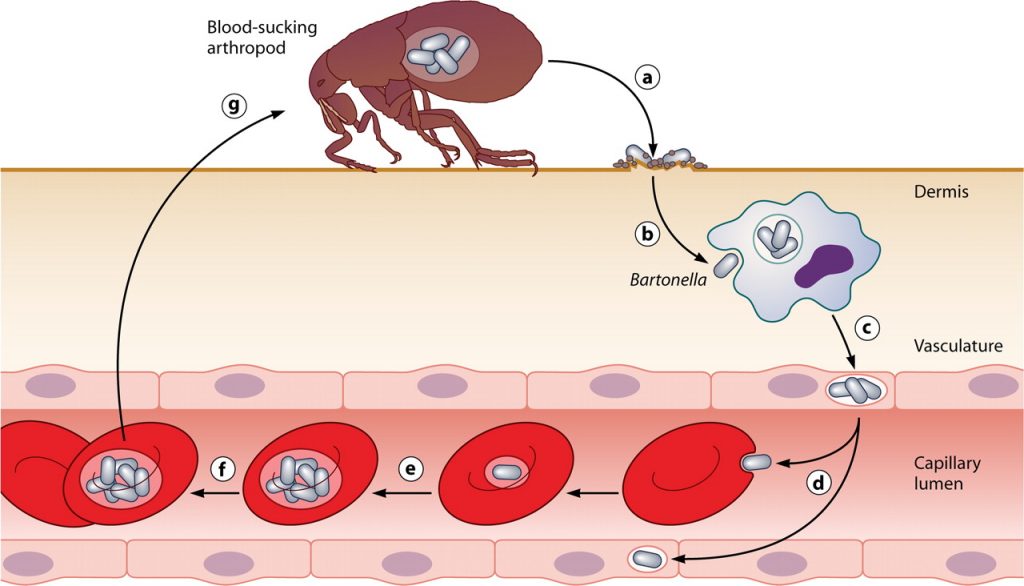Cat Scratch Fever In Cats
Cat scratch fever, also known as cat scratch disease (CSD), is caused by bacteria named Bartonella henselae. The disease is transmitted to the cat through flea feces that is present on the cat’s skin. Thus, when the cat grooms himself, he ingests the bacteria and becomes infected. Although it doesn’t cause any severe complications to cats other than fever, muscle pain or swollen glands, its owner is at a huge risk of getting infected with cat scratch fever. The disease can be transmitted to humans through just a scratch, lick or a bite.
What is Bartonella?
Bartonella organisms are very sneaky in nature. They are not easily caught as they gradually reproduce by hiding in the circulating blood cells and blood vessels in fewer numbers. Fleas, spiders, ticks, and lice are known to transmit the disease to other animals and eventually humans.

The signs and symptoms are not major and many people mistake the signs for some common flu or disease. Although most cats don’t show any clinical signs of cat scratch fever, below are some common symptoms of the disease –
- Swollen glands
- Fever
- Lethargic
- Loss of appetite
- Vomiting/diarrhea
- Nasal and eye discharge
- Sneezing
- Inflammation in the mouth and gums
The cats that roam outside or haven’t been administered flea preventives are at the most risk of getting cat scratch fever. However, indoor cats aren’t immune to it; fleas can easily enter your house through humans, other dogs or the bags you carry with you. Fleas not only suck your pet’s blood but they also transmit dangerous diseases. To protect yourself and your cat, know the signs and symptoms of the disease.
Diagnosis of Cat Scratch Fever
To get an exact diagnosis, your vet will need to run a few tests. He will require a complete medical history of your cat and if he has been infested with fleas or ticks in the past few months.
The vet might run a Western Blot test in your cat which assesses the antibodies in the system against the bacteria. The test needs to be sent to a laboratory and the results usually arrive within a few days.
Another possible diagnostic test is ELISA testing. ELISA stands for enzyme-linked immunosorbent assay and it’s similar to Western Blot but takes lesser time to get the results.
Through these tests, your vet will be easily able to diagnose the disease and suggest the right treatment to your cat.
Treating Cat Scratch Fever
The treatments are not very complex. Usually, the treatment consists of a few doses of antibiotics and some rest. Bartonella is gram-negative bacteria. Hence, it’s difficult to treat it with antibiotics that have low power. To cure this disease, intense antibiotics are administered to the cat for about three weeks to remove the disease from its roots.
If the cat has very mild symptoms, many pet parents just wait and watch. There are cats who can fight the disease by developing sufficient antibodies to protect themselves. Hence, sometimes treatments aren’t necessary when the issue isn’t that severe.
How to Prevent Cat Scratch Fever?
If your cat was treated for cat scratch fever, ensure that he doesn’t come in contact with any parasites, otherwise, he has a chance of getting contaminated again. Moreover, administering flea and tick preventives will protect your cat from catching this disease.
Frontline Plus is the most effective flea and tick treatment for cats. It protects your kitty from those annoying parasites for a full month. Hence, this treatment will not only be beneficial against parasites but it’ll also protect your pet from the diseases caused by them.




